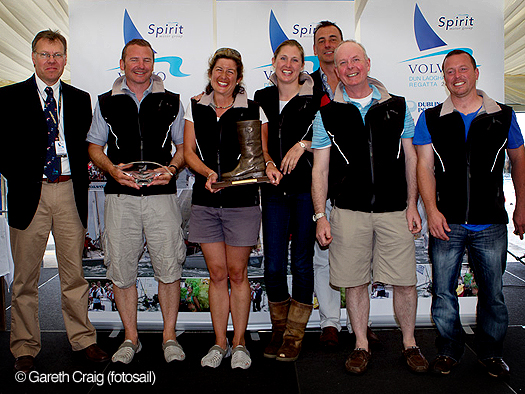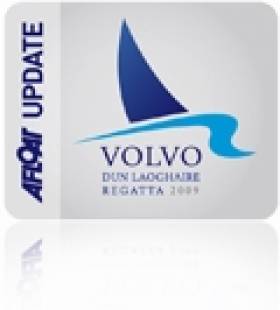Displaying items by tag: Lawless
Sailing to Success on Supernova
She maybe old but she's still a fast one. Don't let the fact that a 33-year old local yacht took top prize from a combined fleet of 420 competitors at Ireland's biggest sailing regatta, the Volvo regatta in Dun Laoghaire yesterday.
The three sailors involved in the campaign, skipper Ken Lawless, Sybil McCormack and Pat Shannon have invested in a three year campaign to get the quarter tonner Supernova up to speed and it was only after a season of modifications last year that they found the real go button on the Dubois Starflash design.


In fact, Supernova won from O'Driscoll by only the narrowest of margins and only after the third tie-break was applied to the arch rivals.
Both boats had equal points plus three wins and two second places apiece. Both had also discarded a second place and so the class, and the 2011 title, was decided on countback and who won the last race.
In a season of successes for the vintage Dubois Starflash design Dun Laoghaire sailor Lawless and his partners Sybil McCormack and Pat Shannon have already won class honours in June’s Lambay race. The quarter tonner has taken overall honours too in Dublin Bay Sailing Club's first series this season.
Part of the reason for the success has been a winter of overhauls to the 1978 design including extra downwind sail area and improved stability with the relocation of its floorboards. The improvements brought about better performances downwind, especially in light airs.

The vintage boat from the old IOR handicap days is in fact a carbon copy of the famous 1979 Admiral's Cupper two tonner Police Car, a boat that has held huge appeal for Lawless.
"We were second to Hard on Port at this regatta two years ago when they won boat of the week so there was intense rivalry today but we knew we could do it!" Lawless said last night.






























































